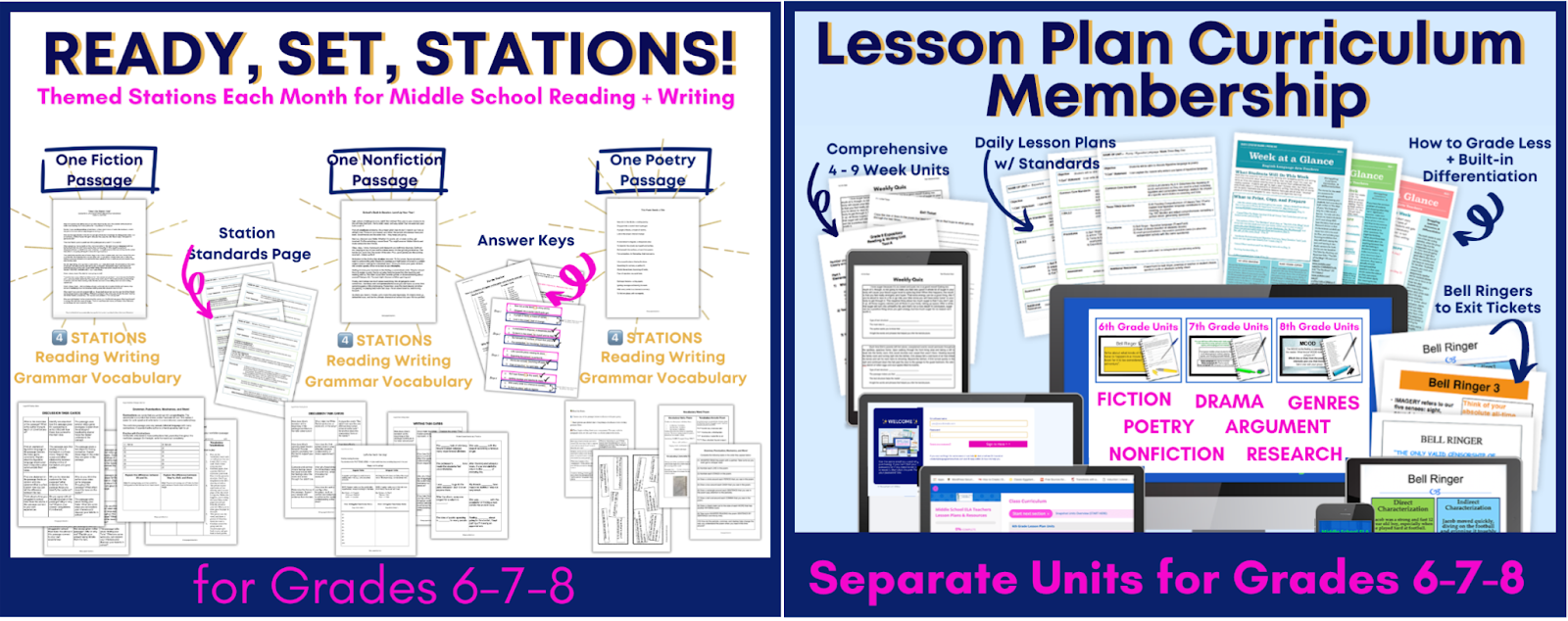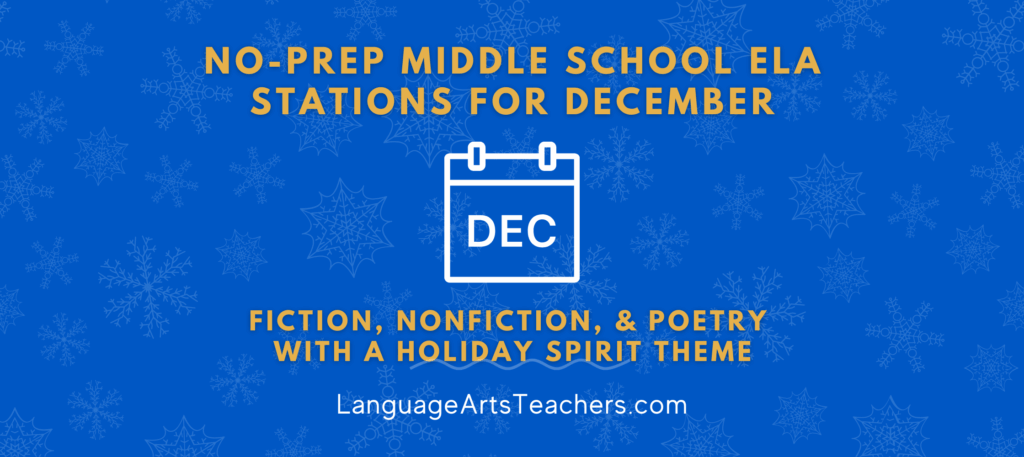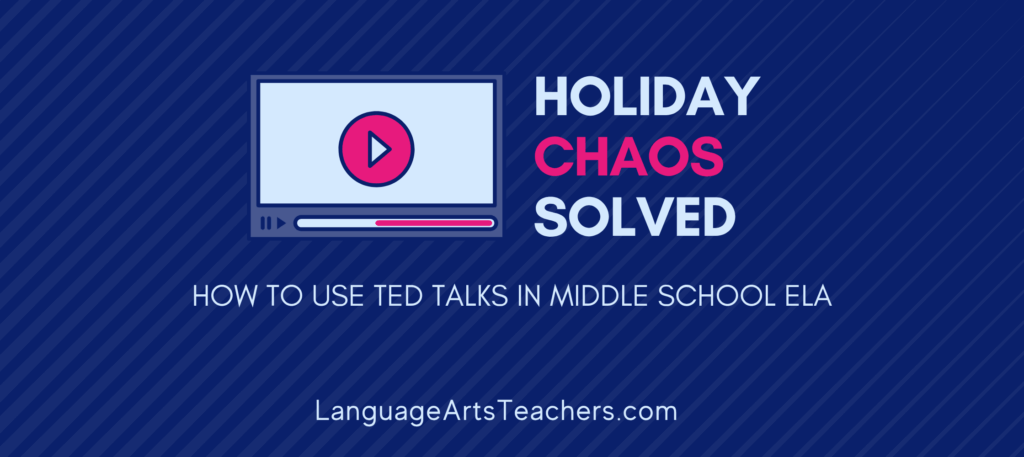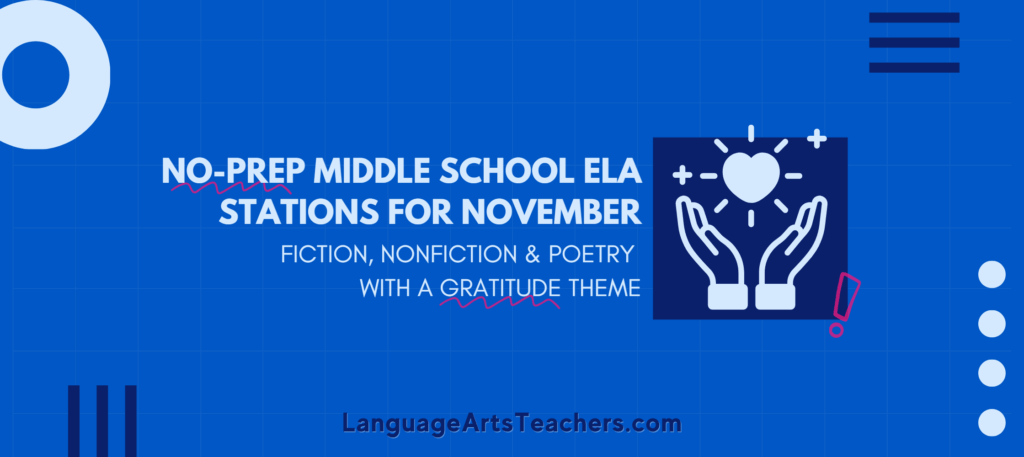Middle school ELA is not exactly known for being a serene environment all the time. Between the constant chatter, the mystery noises coming from the back, and the random falling out of their chairs (is that just my class?), the vibe can get… loud.
And yet—calm is possible. Even in a middle school ELA room.
Over the years, I’ve tried everything from elaborate classroom makeovers to desperate self pep-talks. And here’s what I’ve learned: consistent calm comes from a few small, intentional choices—not from spending hundreds at Target or pretending your students will suddenly morph into angels.
Here are my five go-to calm-creators I heavily rely on that make a very noticeable difference in both my students’ focus and my own sanity.
🎧 Brain.fm – for focus-boosting, research-backed background music
You know how sometimes you put on instrumental background music and instead of helping kids focus, it just turns into “Guess This Song” karaoke hour?
That’s why I started using Brain.fm—a music app that uses research-backed sound patterns to help the brain focus. I put it on during independent work time, writing days, or even during bell ringers if I feel the room needs a reset. The music isn’t distracting because there aren’t recognizable lyrics or pop beats; it’s all about creating that steady hum that helps kids sink into the work.
Action Step: Try a free trial or start with a short 15-minute playlist. Let students know it’s “brain music” so they associate it with focused work, not social time.
💡 Lamps + little white lights – goodbye, harsh fluorescents; hello, cozy reading nook vibes
Nothing kills the cozy, focused vibe faster than fluorescent lights buzzing overhead. Personally, I struggle with headaches from working in a room lit by fluorescents all day, so years ago I started implementing soft lamps and a strand or two of white fairy lights.
Not only do they make the room feel calmer, but they actually help my students with sensory sensitivities stay more comfortable. Bonus: it’s one of the cheapest ways to make your classroom instantly more inviting.
Action Step: Start with one or two lamps from home or the thrift store. Use them during reading or quiet work time so students start connecting the lighting with a calmer pace.
🧘♀️ Bell ringer = quiet time – routines that settle students and your nervous system
In my class, bell ringer time isn’t just a 5-10 minute “getting started” activity. Rather, it’s a signal for quiet. As soon as students walk in, they know the first five-ish minutes are for silent, independent work. No questions, no “I need you to sign this form” stuff, or “Mrs. _____ told me to tell you…” type conversations. It doesn’t mean I’ll never answer questions or interact with my students—but it does mean that until the timer goes off, we’re working on the ‘bell ringer’ of the day (and then choice reading if anyone finishes early before the timer ends).
It’s a simple shift, but it’s huge for setting the tone. We ease into the period instead of launching into chaos, and I get a chance to take attendance, grab a sip of water, or just breathe.
Even if your school only has a 3 minute passing period, a LOT of chaos can occur in the halls. Your students sometimes bring that chaos into your classroom, and they need a quiet reset as much as you do.
Action Step: Pick one bell ringer activity you can repeat daily—grammar fix-its, a quick write where students respond to a quote or an image, a short reading excerpt. Keep it predictable so the routine itself creates calm.
Every single unit in my ELA Teachers Lesson Plan Membership comes with a daily bell ringer for all these reasons. They’re THAT important.
🖼️ Plain, sparse walls – minimalist decor = maximum focus
I used to think a “good” classroom meant every inch of wall space covered in anchor charts, posters, and student work. But all that visual clutter made me anxious while likely overwhelming my students.
Now? My walls are pretty plain. I keep one or two relevant anchor charts up at a time, and I rotate them when we change units. The rest of the space is neutral and distraction-free.
Action Step: Try taking down half of your current wall displays. Watch how it impacts both your students’ ability to focus and your own ability to think clearly.
⏱️ Digital timer with soft chimes – structure without the chaos countdown
Middle schoolers love to ask, “How much time do we have left?” approximately every 90 seconds. A visible digital timer is my cure. I use it not just for bell ringer time, but for running stations as well.
I project a countdown on the board and pair it with a soft chime at the end—no blaring alarms, no jump scares. The structure helps students pace themselves, and the chime keeps transitions smooth without me shouting over the noise.
Action Step: Try the free timer on ClassroomScreen.com or a YouTube “soft chime” timer video. Use it for everything from station rotations to writing sprints.
Creating calm doesn’t mean your classroom has to be silent (because sometimes, learning is loud—and that’s ok!) or that you have to buy matching rugs and color-coded rattan bins. It’s about building an environment where students feel grounded enough to learn and you feel steady enough to teach.
Pick one of these calm-creators to try next week. Layer in another when you’re ready. And remember: in a middle school ELA classroom, calm isn’t the absence of noise—it’s the presence of focus.
If you want to go deeper into creating a smooth-running, calm-ish classroom starting yesterday, my Ready, Set, Stations™ and ready-made ELA Lesson Plan Units are built to help you set routines, build community, and actually enjoy teaching… without burning yourself out before 10AM each day.




